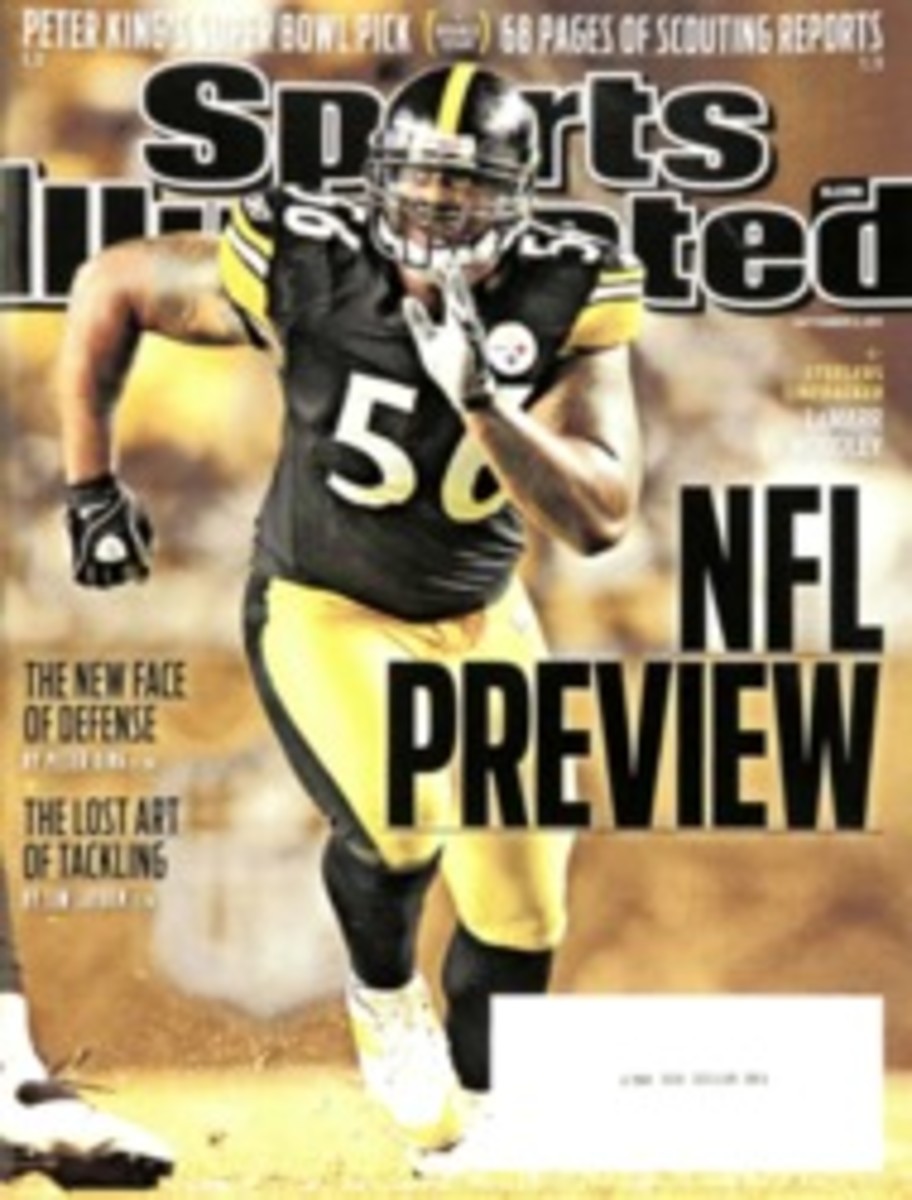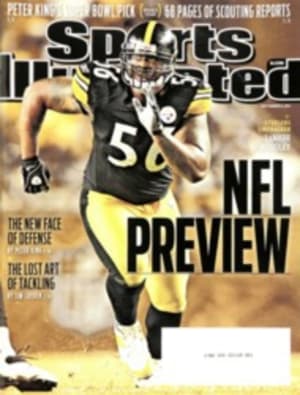
BAD TIMING
Once upon a time there was a Tour player so good that the other pros treated him like a god. Fred Couples said, "You get the feeling sometimes that the rest of us are all playing for second place." Tom Watson said, "He has raised the bar to a level only he can reach. Someday I'll tell my grandkids that I played in the same tournament with Tiger Woods."
The record book said pretty much the same thing. From 1999 through 2003, Woods won more than a third of the tournaments he entered. As recently as 2009 his winning percentage hovered near 30%, almost 10 points higher than that of Ben Hogan, the only other pro with a win rate above 20%.
Woods won often, and he also won big. He won his first major, the 1997 Masters, by a record 12 strokes. He ran away with the 2000 U.S. Open by a record 15 strokes, and a month later he won the British Open by eight. The following spring, when he slipped on his second green jacket, he owned all four major titles at the same time. Woods was player of the year every year. He won the Vardon Trophy for low scoring average every year. He was the leading money winner every year.
And he had the best tempo.
By best tempo I mean most consistent. Virtually every Tour player swings at about a 3-to-1 ratio of backswing to forward swing. But tournament pros are not robots; some of their swings deviate fractionally. The better measure of a golfer's tempo is repeatability. Which Tour pros can count on their inner clock to function flawlessly over four rounds?
To answer that question, I collect video of the pros under tournament conditions and then check for variability in their swing times. For example, I studied videotape of the 2002 U.S. Open that showed Tiger warming up for his final round and then shooting a cautious 72 to win his eighth major. When I timed his range swings I was tempted to shake my laptop to see if it was broken. Every single backswing timed out at 24 frames of broadcast-standard video. Could Tiger take it to the 1st tee? Oh, yeah. He drilled a three-wood down the fairway and then floated a wedge to the middle of the 1st green. Both shots were 24/8.
Woods gained his consistency after he scrapped the swing he used to win the '97 Masters and started building a new one under the supervision of Butch Harmon.
It's hard to argue retroactively against the switch. Once Woods got the new moves down he went on a half-decade tear highlighted by the Tiger Slam and a six-tournament winning streak. The only thing I can contribute to the discussion is my tempo data, which says that Woods swung faster in 2000 than he did in 1997. That's faster as in elapsed time, not clubhead speed. Tiger's rebuilt swing pared thirteen-hundredths of a second off his rookie-year swing.
But while Woods got faster, he maintained the critical 3-to-1 timing ratio. When I first timed him, using tape from the '97 Masters, he was a consistent 27/9. Five years later, with eight more major titles under his belt, he was an even steadier 24/8.
Different swings, yes. But identical in their adherence to Tour Tempo.
Perfection must be a drag, because Tiger went rogue again. In the 2002 season he fired Harmon and later that year hired Hank Haney. Haney's prescription (for a swing ailment that only he and Tiger lost sleep over) was a faster, flatter backswing with less wrist cock. It was a less pretty swing—Tiger's head bobbed like a cork on a wave—but Woods silenced the Haney haters with a six-win season in '05 that included a fourth green jacket and a second claret jug.
Did I say he silenced the Haney haters? That would be wrong. Tiger still hit it farther than most off the tee, but young lions like Bubba Watson and Dustin Johnson sailed their tee shots 20 yards past him. More alarming, Woods found it increasingly difficult to find the fairway. At the '06 Ryder Cup he yanked his opening drive in a four-ball match into a K-Club pond that wasn't thought to be in play. "Tiger's opening tee shot made us all feel at ease," said Europe's Colin Montgomerie.
Woods dismissed his critics. He said he was "getting close." It wasn't my fight. Nevertheless, I half expected the phone to ring and a voice to say, "This is Hank Haney, and I was just wondering if you had any fresh tempo numbers on Tiger," or "This is Brandel Chamblee, and I need some evidence to support my contention that Tiger is screwing up his swing."
I was ready for either call. I had data showing that Tiger's '05 swing was faster than his '02 swing. With Harmon at the helm, Woods had been a steady 24/8. With Haney, Woods was 21/7.
Note that I didn't say a steady 21/7. As he struggled to master his new swing, Tiger seemed to have turned off his internal clock. Some backswings took 22 frames, but others took 19. Some swings seemed to have been cobbled together from different golfers—a Byron Nelson backswing with a Moe Norman downswing (23/6). The variability did not surprise me. When a golfer is consciously manipulating the club, his tempo will suffer. It was only a matter of time, I predicted, before Woods got comfortable with his new mechanics and regained his rhythm.
A year passed, then another, but Tiger's timing ratio refused to settle around a Tour Tempo node. His swings had a lurchy quality, like a man trying to heave a sack of grain onto a dock. Tiger hit his best shots with a 21/7 swing, but it wasn't a tempo he could summon at will. Why couldn't he?
It's a fair question, when you consider that our Tour Tempo training tones had found their way to lesson tees around the world. The only two guys on the planet who didn't know that bad tempo could be corrected in five minutes were the world's greatest golfer ... and Charles Barkley.
I had to consider another possibility: that Tiger Woods was the first posttempo golf star, a player so gifted that he could disregard rhythm and timing and simply will his ball into the hole. In 2009, after all, he won six PGA Tour events, won all five of his Presidents Cup matches and closed out the season with a two-stroke victory at the Australian Masters.
Then came that fateful Thanksgiving weekend, when Tiger crashed his car—proving that Tour Tempo was not, as we had claimed on the book jacket, "golf's last secret finally revealed."
Woods didn't play again until the 2010 Masters. Naturally, I was eager to see how four months away from the game, including a stint in rehab, had affected his tempo. One of the first swings I timed was Tiger's tee shot on the par-5 13th, a sweet little draw that traced the curve of the dogleg and found the middle of the fairway. Clicking the mouse to advance Tiger's swing frame by frame, I counted 19 frames to the top of his backswing and an additional six frames back to the ball.
John Garrity, my Tour Tempo co-author, was on the speaker phone from the Augusta National press room. "Nineteen?" he asked, his voice rising. "With a fairway metal?"
I shared his surprise. I had never seen Tiger get down to 19 frames with a long club. "Moe Norman was 18/6," I said, "but he had a much shorter swing."
"So which is it? Is Tiger a 21/7 or an 18/6?" Garrity asked.
I gave John my best scientific assessment: "I don't know."
Later that year, Haney dropped Woods as a client and Tiger started working with a brainiac named Sean Foley. Since then, Tiger's full-swing tempo has shown occasional improvement, but his tempo fractions at last month's PGA Championship, during which he landed in 22 bunkers and missed the cut, were abysmal. Long game, short game, everything was broken.
I can no longer dodge the conclusion that Woods—the player I singled out in Tour Tempo for having the best tempo in tournament golf—now has the worst tempo in tournament golf.
"It's a process," Woods has said, trying to explain his struggles. "Any time you make changes you want to go back to your old motor patterns, especially when you're under the gun."
Tiger may be missing the forest for the trees. Yes, it takes a lot of reps to consciously train your muscles to follow new patterns. That's why swing changes are so bad for tempo. Timing has to suffer when you're trying to control a position of your body while it is swinging a club at more than 100 mph. But if tempo is as critical to shotmaking as the pros say it is, you'd think that Tiger would practice his new moves at his prescribed tempo. Many pros, in fact, do just that.
Woods does not, as far as I can tell.
It would be self-serving for me to suggest that he perform his swing drills to a 21/7 Tour Tempo track. And I could be totally wrong in my belief that any of Tiger's swings—whether molded by Harmon, Haney or Foley—will hit it long and straight when executed at a consistent 3-to-1 tempo.
And if I'm wrong, I'll admit it in Tour Tempo 3: Timing Is for Twits.
But I don't think I'm wrong.
Now on GOLF.com
For fresh insights and opinions from SI Golf Group writers, go to GOLF.com/confidential
WHAT IS TOUR TEMPO?
Confused by the numbers? Here's a quick tutorial. John Novosel is the Kansas inventor who discovered that virtually all Tour-quality golfers—no matter how frantically or leisurely they swing—have the exact same tempo: a 3-to-1 elapsed-time ratio of backswing to forward swing, measured to impact. This ratio is expressed in frames of broadcast-quality video— e.g., 27 frames to the top of the backswing and 9 frames down to impact. (A 27/9 in Tour Tempo lingo.) Sam Snead in his prime was a 24/8, Ben Hogan was a brisk 21/7, etc. Novosel allows for a plus-or-minus one-frame margin of error due to measurement limitations. A swing timed at 25/8 or 27/10 meets the 3-to-1 standard, but a lurchy 31/6 sends your tee shot into the neighboring marsh.
PHOTO
Photograph by DAVID WALBERG
EASY EXPLANATION When Woods was winning big and often, he had the most consistent tempo on Tour. Two coaches and numerous swing changes later, Tiger's tempo is a disaster.
EIGHT PHOTOS
FRED VUICH
PHOTO
JEFF NOVOSEL (BOOK)

